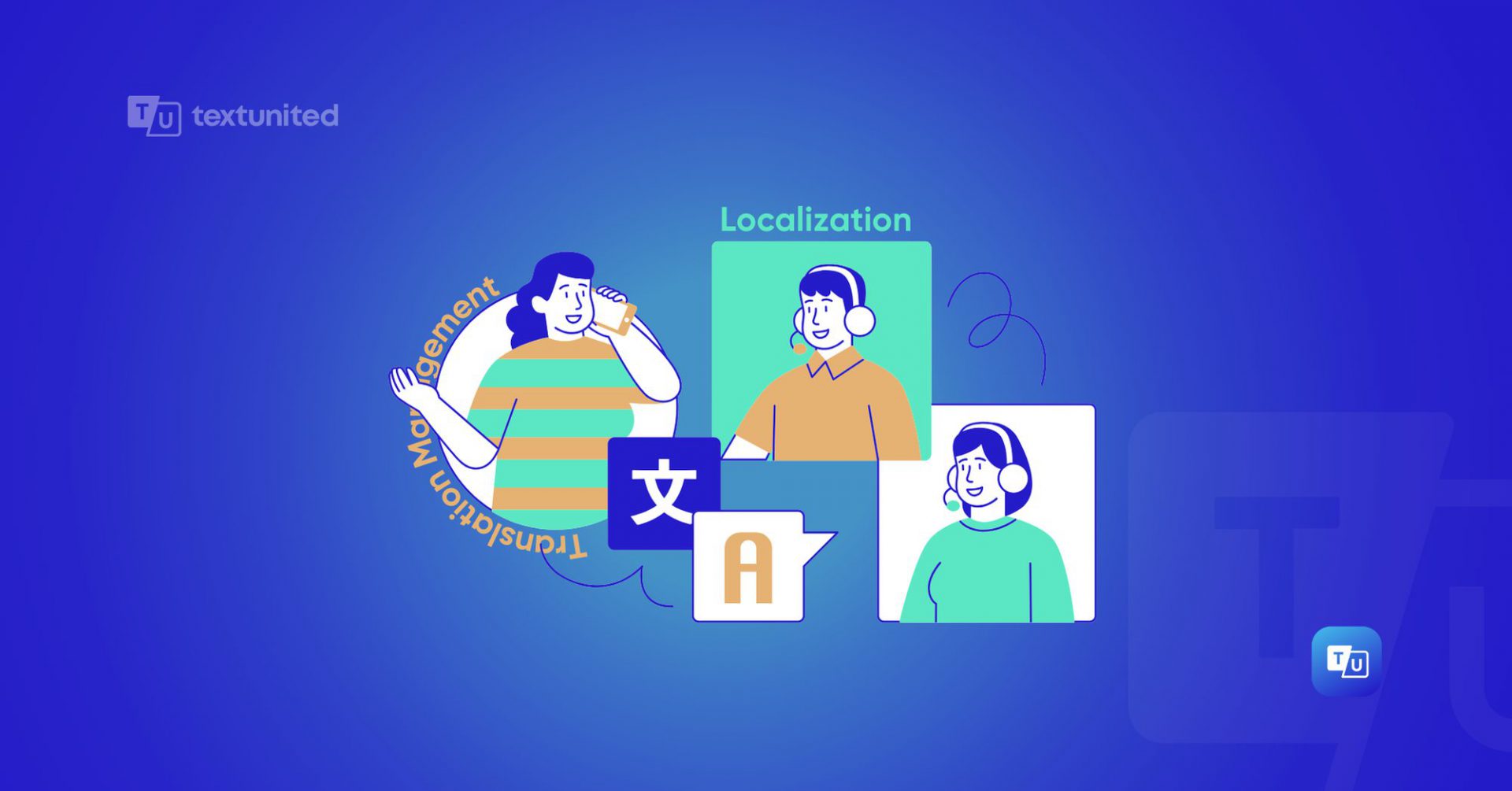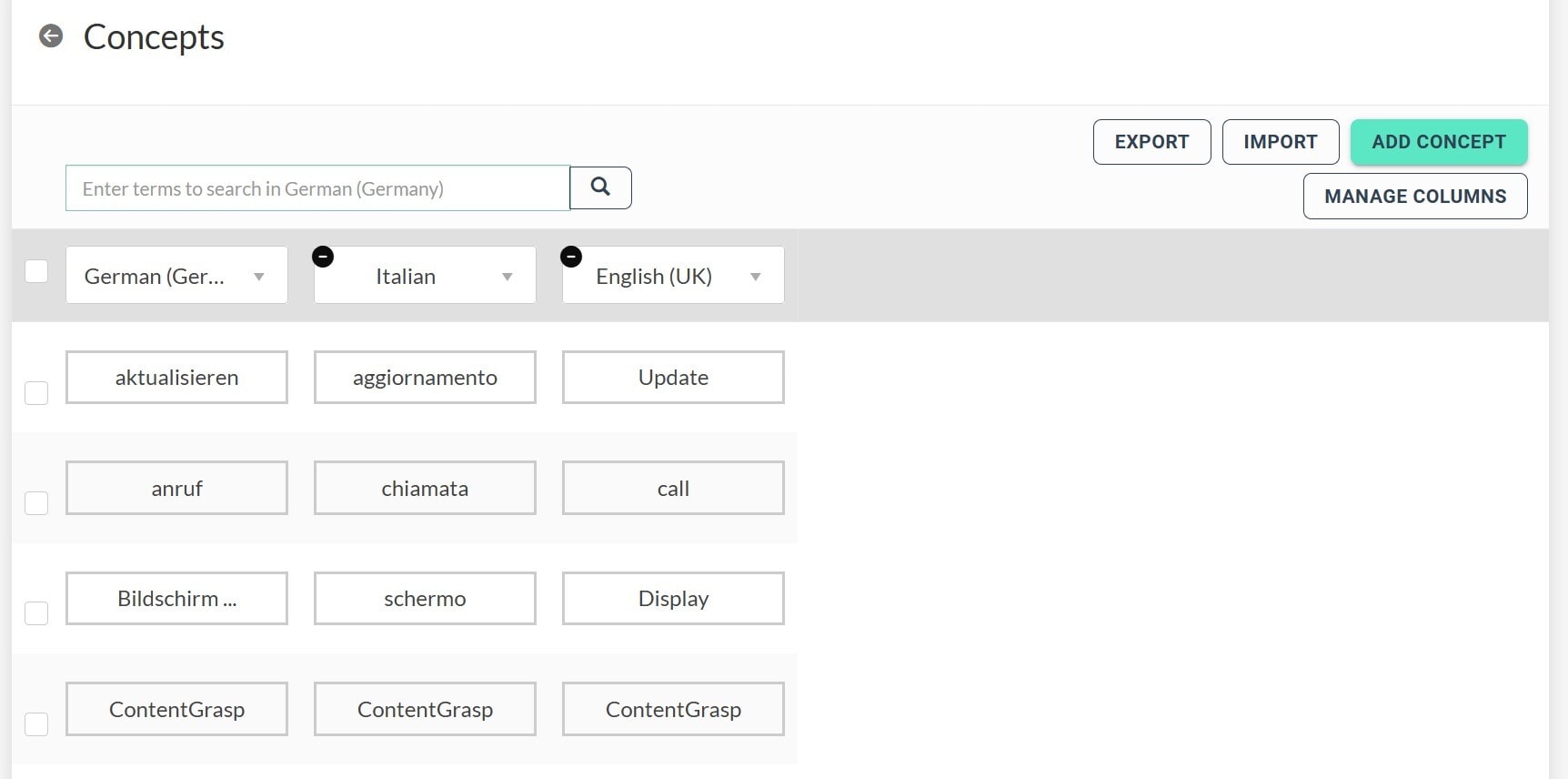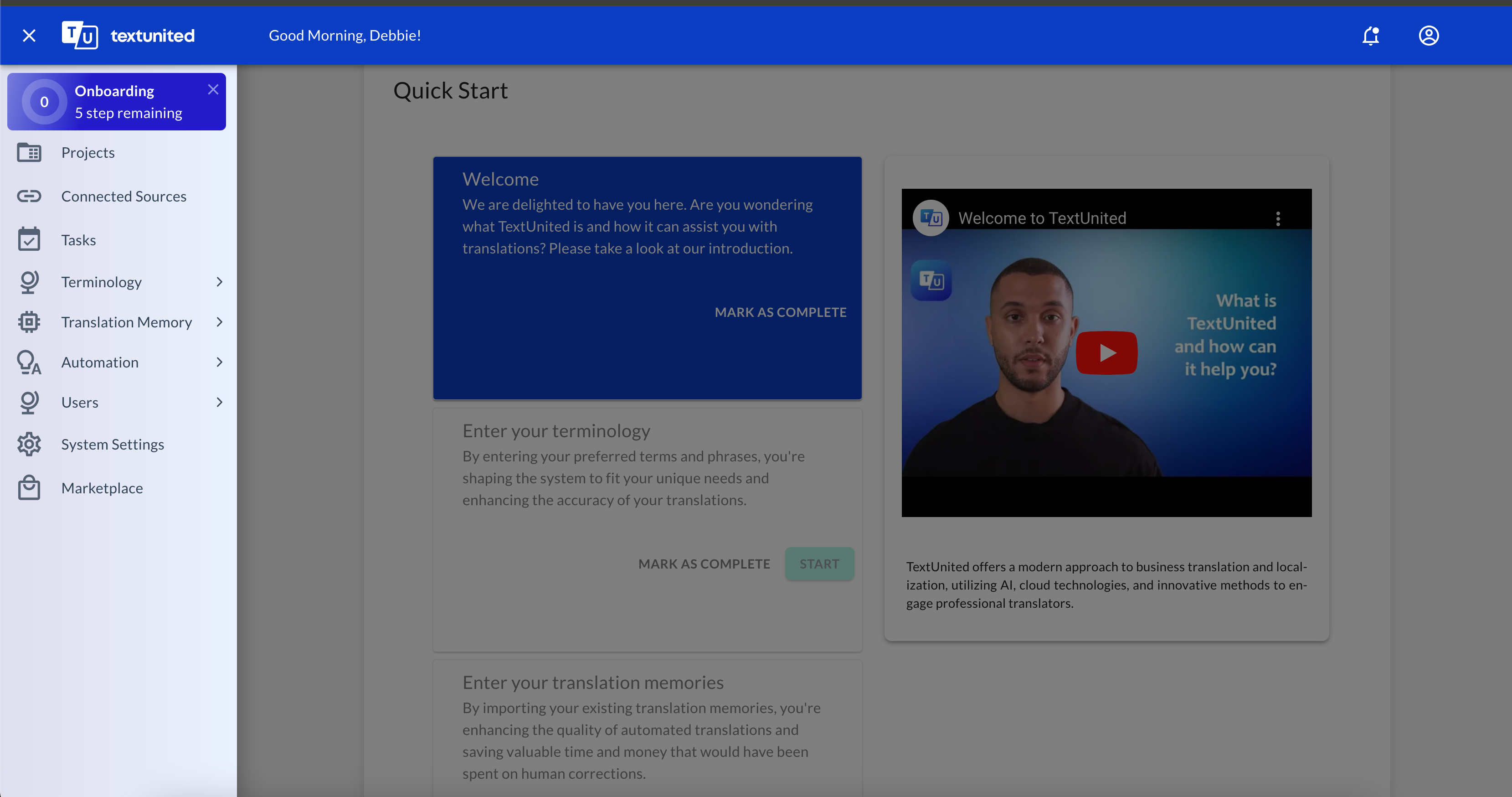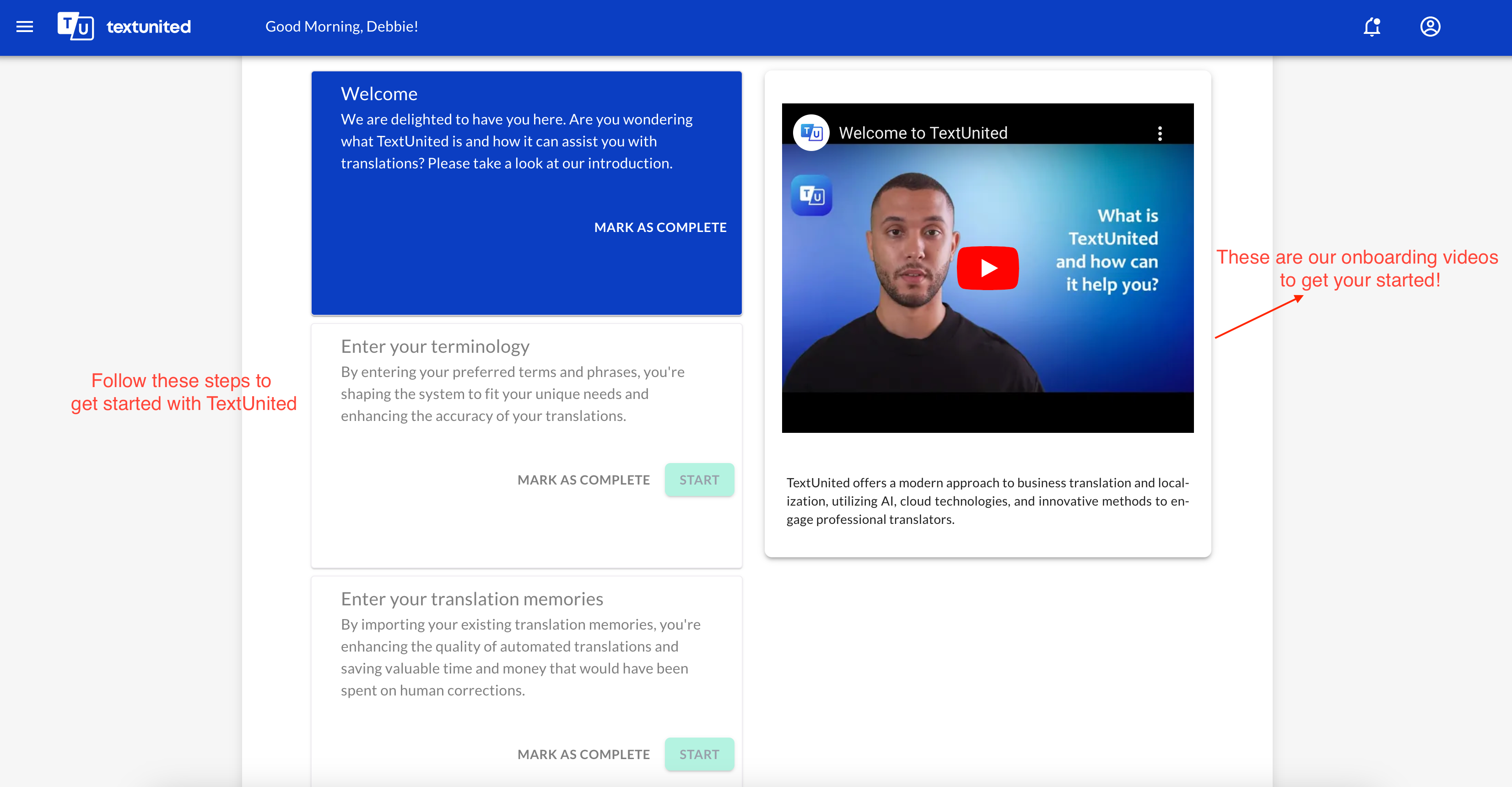Is your business struggling to implement a successful localization strategy for managing translations?
Managing translations can sometimes feel really complicated, right? If you’re a business user without much experience in this area, it might seem like there’s too much going on. You’ll have to deal with:
- Different translation workflows
- Special terms
- A lot of localization tools to figure out
As a result, you spend too much time and make unnecessary mistakes, especially for small businesses.
What if I told you there’s a way to make things easier? You need a localization strategy. We’ll go into this later, but for now, think of it as a simple plan that helps you organize and manage your translations better.
We’ll guide you on what to focus on and how to make the localization process easier with a localization strategy. So, you’ll be able to turn a confusing task into something much simpler.
Let’s see how this approach can help you manage your translations with ease!
What Is a Localization Strategy and Why Should It Matter to Your Business?
Let’s start by breaking down what a localization strategy really is. It’s like having a clear plan for your translations.
But localization isn’t just about turning English into French or Spanish. It makes sure your content feels natural and relatable to people in different languages and cultural contexts. And it’s about speaking their language – not just literally, but culturally too.
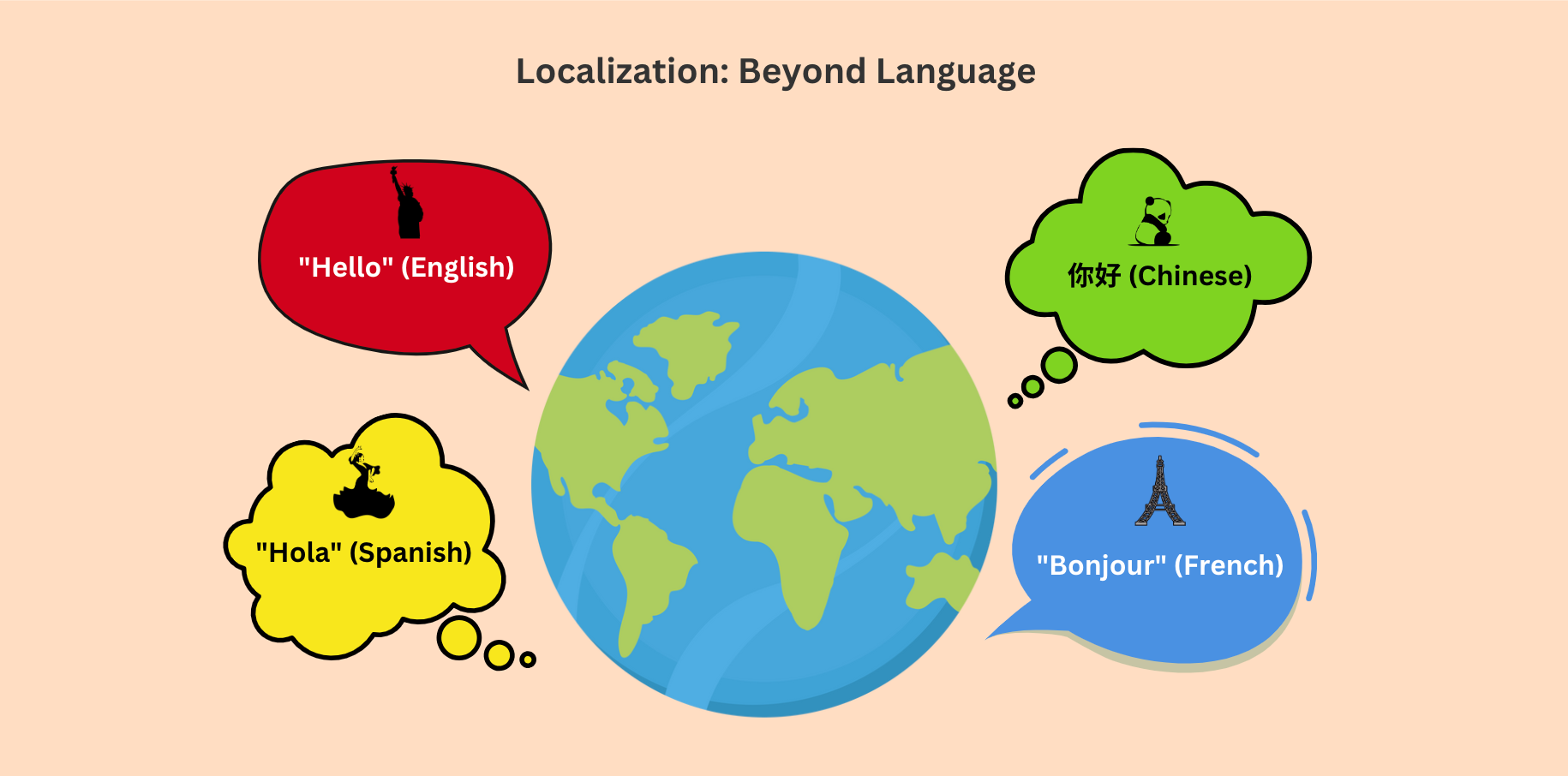
Why Care About a Localization Strategy for Your Localization Efforts?
Now, you might be wondering,
“Why do I need this?”
Well, having a localization strategy helps you prioritize what’s important.
For instance, let’s say you’ve got a long list of things to translate. Without a plan, you might end up spending time and money on content that doesn’t really matter.
But with a strategy, you can focus on what will make the biggest impact. You’ll know which target markets to target first and what website content should take priority.
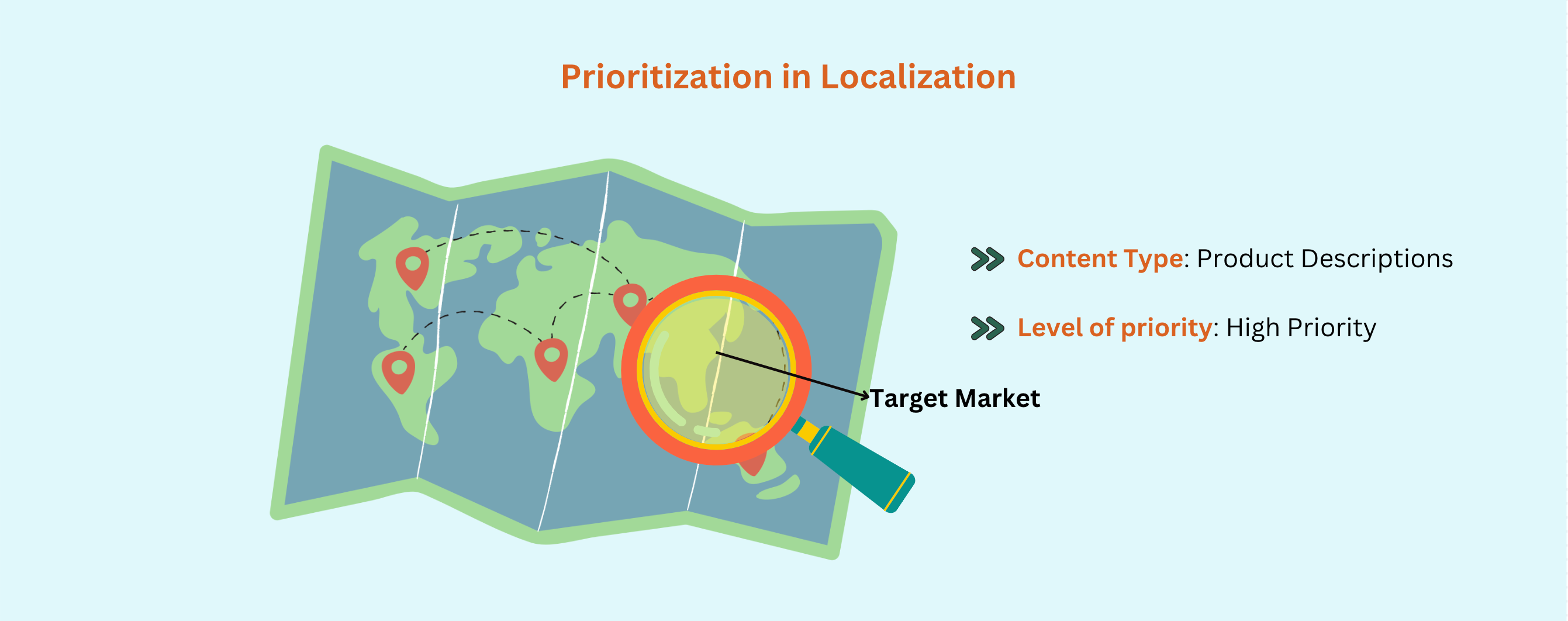
How Does Improvement of the Localization Process Work?
So, how does a localization strategy work? It starts with asking some key questions like:
- Which countries are you targeting, and what languages do they speak? Remember: a simple rule is that one country doesn’t always correspond to one language!
- What content is most relevant to those markets? Consider your website content, any help and support articles, training content and videos, and offline documents that can be important for your business operating in a foreign country.
- How can you make sure your message and brand resonates with global audiences?
Once you’ve got answers to these questions, you can allocate resources more wisely. This means less manual effort and more focused translation work.
Improving ROI of the Translation Process with a Localization Strategy
One of the biggest benefits of having a localization strategy is improving your return on investment (ROI). When you’re organized, you spend less time fixing mistakes and more time connecting with local customers.
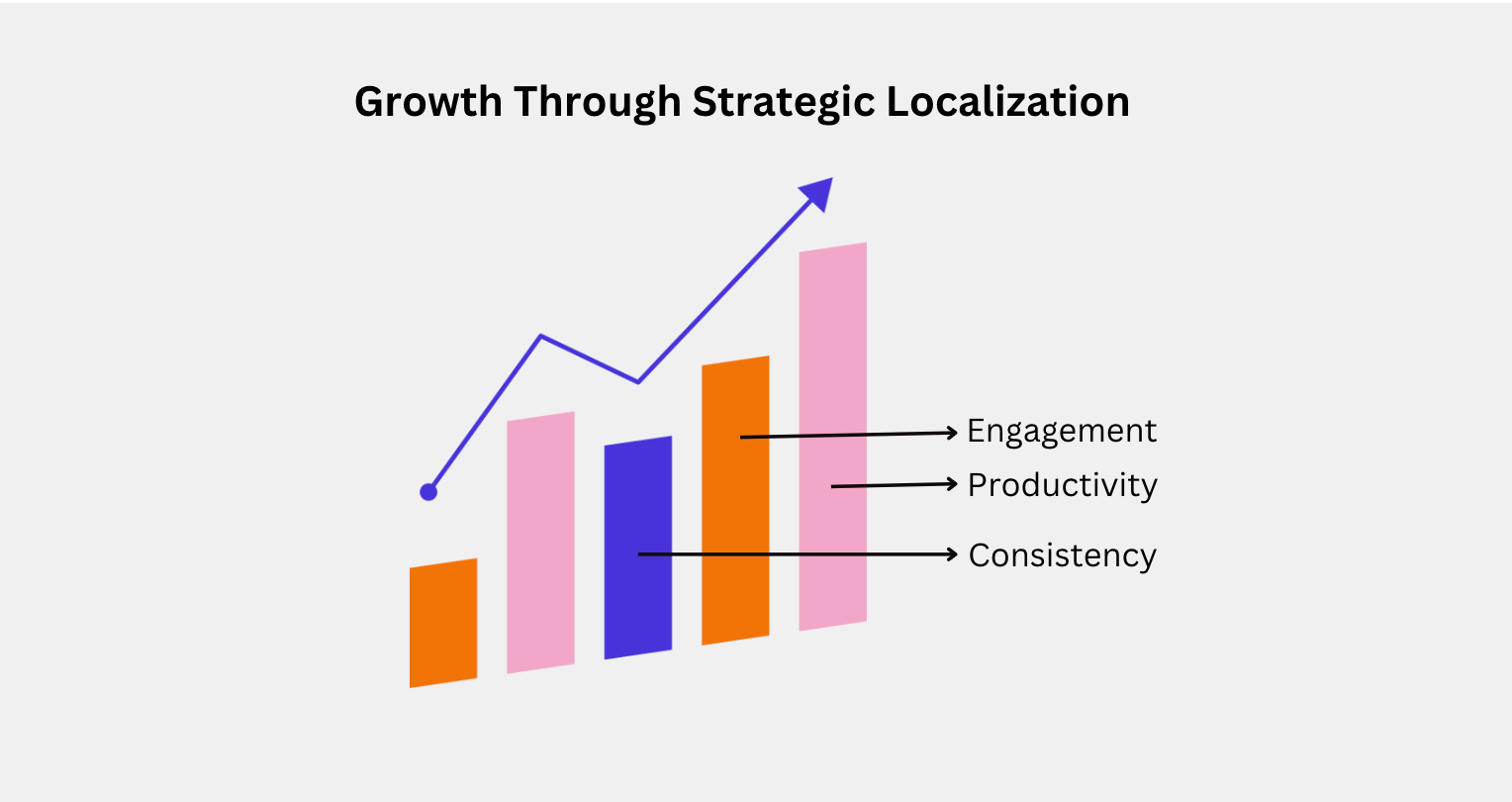
Your translations will be more consistent and relevant, which means your target audience is more likely to engage with your quality translations. And when your audience engages, your business grows.
When Should You Start to Improve Your Localization Process?
You might be asking, “When is the best time to start?” The answer is: as soon as possible!
The earlier you incorporate a localization strategy into your business plan, the easier it will be to manage translations down the road.
Starting early allows you to build a foundation that can support your business as it expands into new markets.
How Can You Develop a Strong Localization Strategy
Creating a strong localization strategy is like building a solid foundation for your house. It takes some planning and effort upfront, but it makes everything else so much easier.
Let’s look at how you can get started on developing your strategy.
What Steps Should You Take First?
So, you’re ready to create a localization strategy. But where do your start? Let’s break it down into simple steps that are easy to follow.
Identify Your Target Markets
First, identify your target markets. For smaller EU e-commerce, SaaS, tech companies, and digital companies, this might mean looking at where your products are already popular or where there’s potential for international expansion. Ask yourself:
“Which countries are showing interest in what I offer?”
Prioritize Your Content
Next, focus on prioritizing your content. Not everything needs to be translated at once. Start with high-impact content that directly engages your potential customers, like:
- Top-level marketing messaging and brand communication
- Your software UI
- Product descriptions
- Customer support articles
- Training content
This approach will help make sure you’re making the most of your resources.
Planning is very important here. By mapping out your translation needs in advance, you can avoid last-minute or unexpected translation requests. This way, you can better use your resources and avoid rushing at the last minute. It’s like planning a road trip; you wouldn’t leave without a map or a plan, right?
How Can SaaS Localization Technology Help Your Strategy?
Now, let’s talk about technology. It can be like having an extra pair of hands when simplifying your translation projects and translation tasks.
You don’t need to be a tech expert to use tools that make your life easier. Here are a few you should know about:
Translation Memory
This tool remembers your past translations, so you don’t have to start from scratch every time. It keeps your translations consistent and saves you time.
Terminology Management
Ever worry about using the right terms? This tool helps keep your language consistent across all your translations. It’s like having your own personal dictionary that’s always up-to-date.
Machine Translation
Automate repetitive tasks to focus on what truly matters. Automation handles things like assigning translations to the right people and tracking progress. It’s like having a personal assistant for your translations.
When you use these technologies, your localization strategy works more easily and feels less overwhelming. They help you manage your translations easily, even if you’re not a technical expert.
Generative AI
The more human-approved content you retain on your TextUnited account, the better results you will get from generative AI systems deployed by TextUnited. Large volumes of quality translations allow these systems to enhance automated translations and to align better with your brand style, terminology, and general consistency of your content in many languages.
How Can a Localization Strategy Simplify Your Translation Process and its Management?
Let’s talk about making your translation process simpler. You’re busy, and the last thing you need is a complicated process slowing you down.
So, how can you make things easier?
Start by using automation tools. These can handle repetitive tasks, saving you time and reducing the chances of errors.
For example, if you’re running an e-commerce business, you might have frequent product updates. With the translation memory feature, you can ensure that once a product description is translated, you don’t have to do it all over again the next time. This saves you time and keeps your translations consistent.
Collaboration tools are also important. They help your team of translators work together without any disruptions, even if they’re in different locations.
Integrate your content systems with TextUnited, ideally using API for the best flexibility and control.
Why Is Communication Vital for Your Success?
Good communication is the backbone for successful translation management. When everyone knows their role and understands the goals, things go much more easily.
Make sure your team is on the same page. Set clear expectations and keep everyone informed about changes and updates.
For instance, let’s say you’re a small SaaS company. If your marketing team changes campaign slogan, they need to communicate this to the translation team right away. This makes sure the new slogan is accurately translated and fits well with the culture of your target markets.
This is how you can easily communicate using TextUnited with its comment feature:
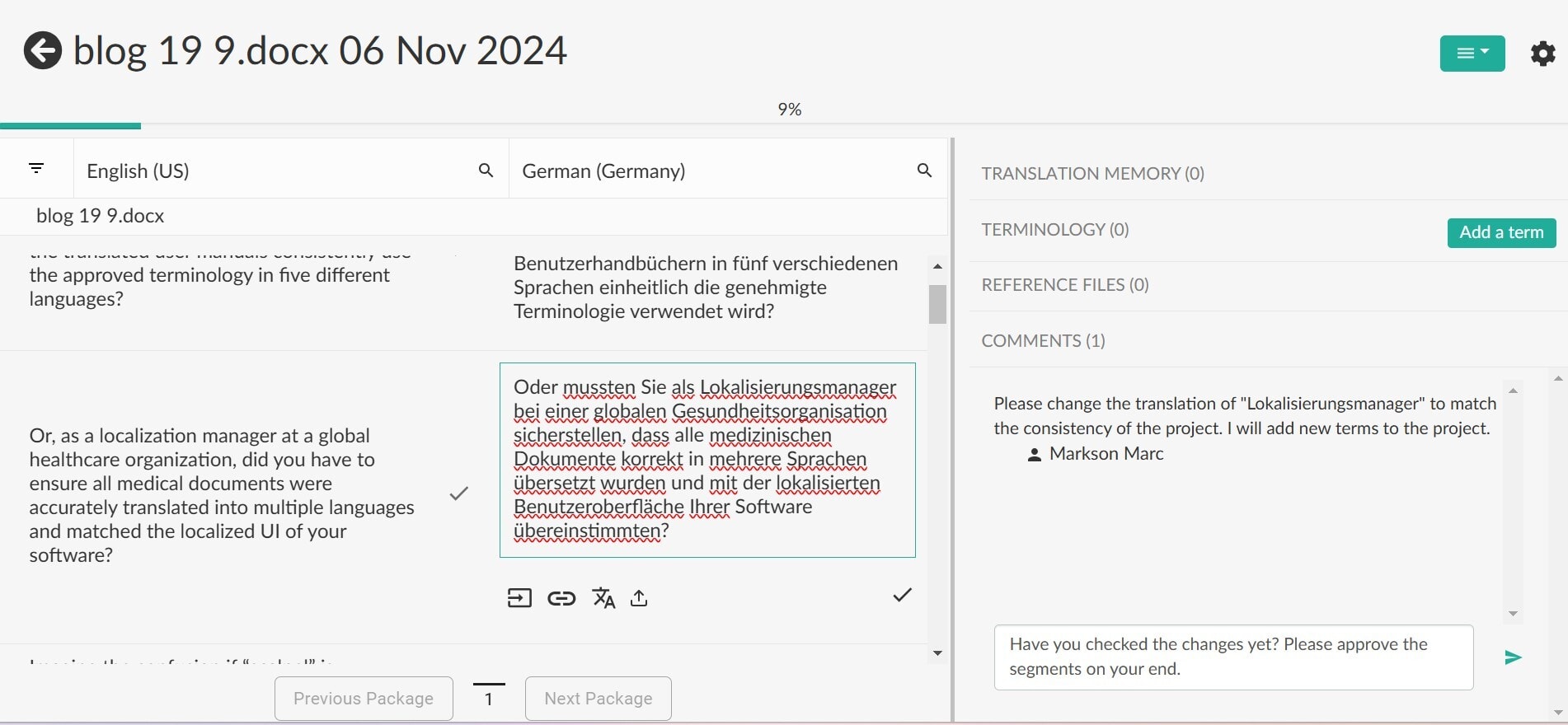
Putting Localization Process in Place to Keep Translations Consistent Across Languages
Consistency is key when you’re speaking to a global audience. You want your message to be in uniform, whether it’s in German, Spanish, or any other language. A localization strategy helps you maintain consistency.
So, use tools like terminology management to keep track of key terms and make sure they’re used correctly across all your translations.
Say you’re a subscription service expanding into new countries. You want your brand message to stay the same everywhere. Having a glossary terms and standard phrases helps makes sure every translation reflects your brand accurately.
This is how the glossary looks like in TextUnited:
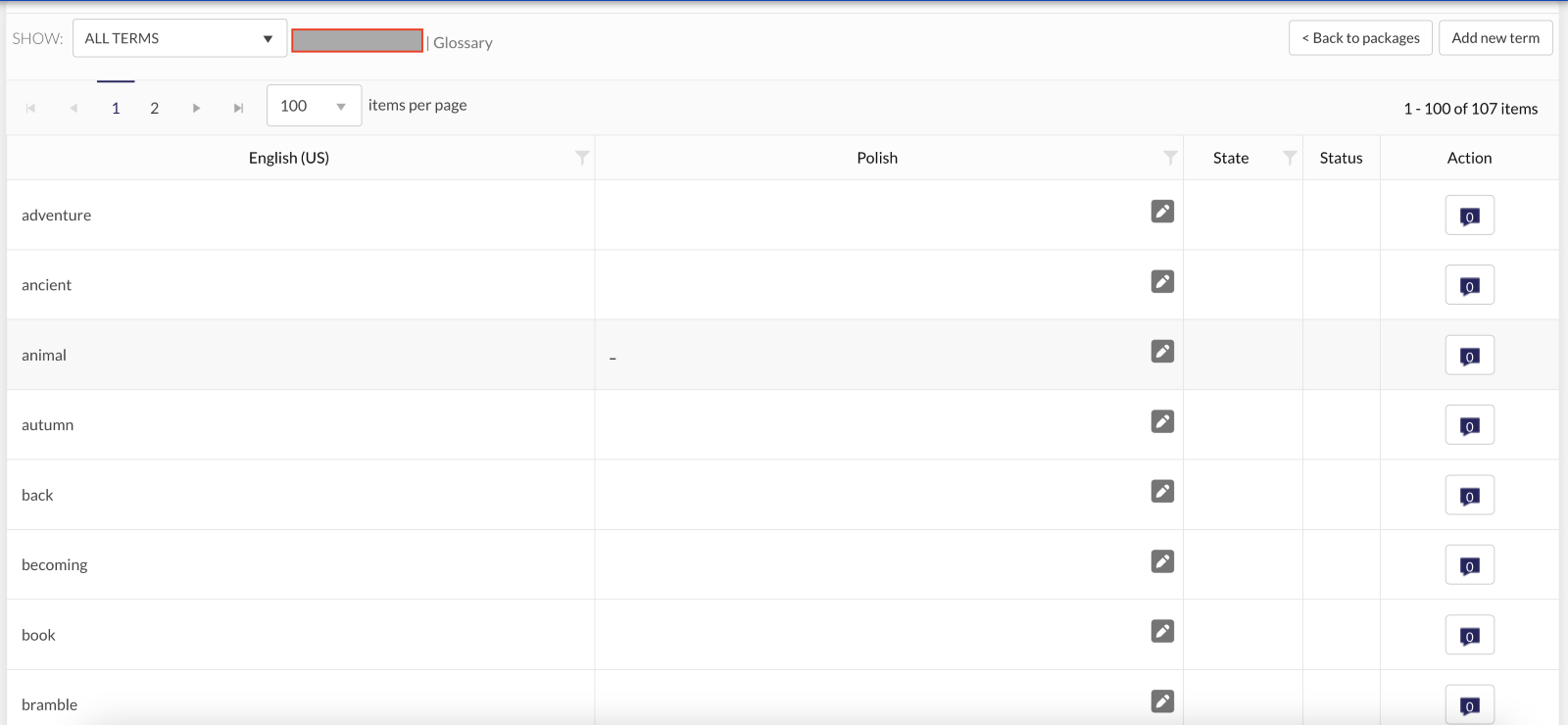
With this, you’re not just making your translation management easier, you’re also making sure your business speaks with one clear voice, no matter where your audience is. This way, you can connect with more people and grow your business with assurance.
How Can TextUnited Support Your Translation Process?
Let’s talk about how TextUnited can make your localization strategy work for you. If you’re managing translations, you want a partner that’s on your side, making the process as simple as possible.
TextUnited is that partner you need. It is designed with your needs in mind. It’s not just another tool – it’s your ally in making sure your translations are accurate and timely.
First off, TextUnited provides features that align perfectly with your strategic goals. it doesn’t matter if you’re running an e-commerce business or a SaaS company – you need tools that work with your plans, not against them.
With Translation Memory and terminology management, you can reuse translations without starting from scratch. This is especially handy when you’re updating product descriptions or software content regularly.
This is how terminology management looks like in TextUnited:
User-Friendly Interface and Time-Saving Tools
We know that you’re busy, and learning a complicated new system is the last thing you want. That’s why TextUnited is designed to be user-friendly. The interface is intuitive, so you can start managing translations right away without a steep learning curve.
To make things simpler, we provide short onboarding videos that guide you through the platform.
What You Will Find in the Onboarding Videos
Once you create an account and log in, you’ll see these videos walking you through the key features like terminology management, translation memory, file uploads, and extended use (like connectivity, process automation and advanced features of TextUnited).
It’s all laid out for you, step by step, so you can try things out right away – easy-peasy!
For example, if you’re a small subscription company looking to expand into new markets, you don’t have time to waste. TextUnited can quickly upload your content, set your language pairs, and start translating—all in a few clicks. This means you spend less time navigating software and more time focusing on your core business activities.
Our onboarding videos cover everything you need to get started easily and quickly. It doesn’t matter if you are just starting out or handling complex projects, TextUnited is ready to support you at every step. Plus, our customer success team is always available to assist you if you have any questions or need further guidance.
Maximizing Localization Efforts ROI with Automated Translation
Finally, let’s talk about getting the most value for your investment. TextUnited’s automated translation features help you save both time and resources.
By automating translation processes, you can focus more on growing your business and less on micromanaging translations.
If you’re working on a tight budget, this is where TextUnited really stands out. Automated translations mean quicker turnaround times and reduced costs, allowing you to allocate your resources wisely. This is important for your business if you need to manage frequent updates without constantly increasing your budget.
What Are Your Next Steps Towards Better Translation Management?
So, what are your next steps for better translation management? Start by developing a localization strategy that fits your business perfectly.
With TextUnited by your side, you’ll find the process simpler and more successful, allowing you to reach your strategic goals with ease.
Use the tools and support provided, and see how your translation management becomes easier, allowing you to focus more on what’s most important – growing your business!
Now, visit TextUnited’s website to sign up for a free trial and make your translation process easier today! Or check out our affordable subscription plans to find the most suitable for your business.
If you need advice, reach out to our customer support team – we’ll be glad to assist you!
Helpful Resources
You may find the following resources helpful:
- How to Manage E-Learning Translations: Centralized vs. Regional Approaches
- Managing Multilingual Terminology with AI Assistance
- Why Translation Memory System Matters?
- Why Subscription-Based Translation Is the Future of Localization
- Content Localization: Your Key to Going Global Online
- Localize Your Website with Subscription-Based Translation Services
- Top 5 Reasons Why Multilingual Terminology is Essential for B2B Products
- Collaborative Translation with TextUnited
- What Does Post-Editing an Automated Translation Involve?
- When to Choose Machine Translation vs. Human Post-editing
- KPIs and ROI on localization
- Why Choose TextUnited Over Smartling for Localization
- The Best PDF Translation Solution: How TextUnited Meets Your Needs
- Step-by-Step Guide to Software Localization with TextUnited API
